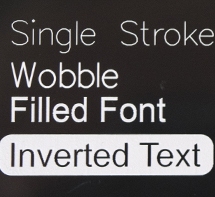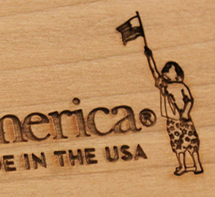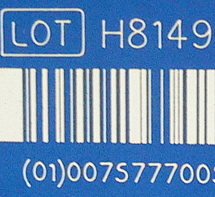Laser Marking and Engraving Applications
About Laser Marking and Engraving
Laser marking applications involve permanent industrial processes that use a beam of concentrated light to alter the surface of a part. The term "laser marking" actually represents several types of laser applications, including laser engraving.Laser marking and engraving applications vary widely and are used across a variety of industries and materials. Laser applications like marking, etching, engraving, and carbon migration allow manufacturers to create important identifying marks on their products, including barcodes, QR codes, serial numbers, date codes, and more. Laser technology can also be used for a wide range of processes, such as bonding, welding, and cutting. These automated marking technologies save time, reduce waste, and can enable part traceability -- a critical element of Industry 4.0.
Types of laser marking applications include:
Laser Marking
Laser Etching and Engraving
Laser Annealing
Laser Bonding
Laser Cutting
Laser Discoloration
Laser Welding
Laser Ablation
Benefits of Laser Part Marking
Laser part marking technology is growing in popularity among many manufacturers thanks to its numerous operational advantages.While there are several different types of laser processes, they share many similar benefits, including:
- Permanent and readable marks
- High-speed operations
- High-contrast marks
- No contact
- Minimal consumables
- Marks metals, plastics, rubber, paper/cardboard
Laser Part Marking and Traceability
Part traceability, the capacity for tracking a component and its relevant history throughout its life cycle, is more important than ever in today’s industrial environment.
The growing complexity of supply chains in addition to the threats of counterfeiting and product recalls have prompted many modern manufacturing operations to implement high-quality permanent laser part marking systems. These systems are able to link unique identifiers – such as 1D linear barcodes or 2D matrix codes – to a computer-enabled database via MECCO’s EtherMark technology or custom graphical user interfaces (GUIs).
The marked codes can provide invaluable track and trace information, such as part number, lot number, and manufacturing date.






Text on black plastic, Logo on wood, Graphics on anodized aluminum, Layer removal on cardboard, 2D Data Matrix on metal, Contrast mark on white plastic
Laser Marking and Engraving Various Materials
- Steel and stainless steel
- Bare and cast aluminum
- Copper
- Titanium
- Plastics
- And many more materials
Laser Marking on Metals
Laser Marking on Plastics
Laser Marking on Organic Materials
Laser Marking Applications in Manufacturing
Lasers have many valuable uses in today's manufacturing business. Explore the different laser applications, then learn more details, understand when to use each application, and explore videos to see them in action.
Laser Annealing
Laser Bonding
Laser Cutting
Laser Discoloration
Laser Etching and Engraving
Laser Marking
Laser marking is a permanent process that leaves a lasting mark on a surface through a variety of methods. This marking can be done with a pulsed or continuous wave laser to add barcodes, unique identification numbers, and other valuable traceability information.
Learn More about Laser Marking
Laser Welding
Laser Ablation
Get the Right Mark with Laser Application Testing
Getting the right mark consistently is important for any successful operation. A variety of factors, from materials to finishes can affect your final outcome.
Before making an investment, take advantage of our free sample marking, available through our state-of-the-art applications lab. Our experts work with you to ensure you are getting the right mark every time, helping you reduce waste, increase quality, and save money.
MECCO: Innovating Marking & Traceability for Manufacturers
Your business isn't one size fits all, and your marking solution shouldn't be either.
Across our long history of innovation, the MECCO team has lived by this philosophy: First, understand what our customers need. Then, provide the highest possible quality marking and traceability solutions to help them meet their goals. As a leading laser part marking manufacturer, we offer a full line of laser marking systems and engineered solutions. Through the MECCO Experience, our experts guide you to the best solution to help you be more efficient, more productive, and more competitive in an ever-evolving market.
Contact us today to learn how we can help you with your traceability needs.
Watch MECCO Lasers
See these marking applications in action in the MECCO Video Library, where our lasers demonstrate the marking of barcodes, text and logos on a variety of materials.
Explore Our Machines
Explore our variety of laser marking products, from OEM models to benchtop workstations to full turnkey solutions. Our product section allows you to filter by material, application, industry, and part size to find the best piece of marking equipment for your project.